#Linden Roots
Text
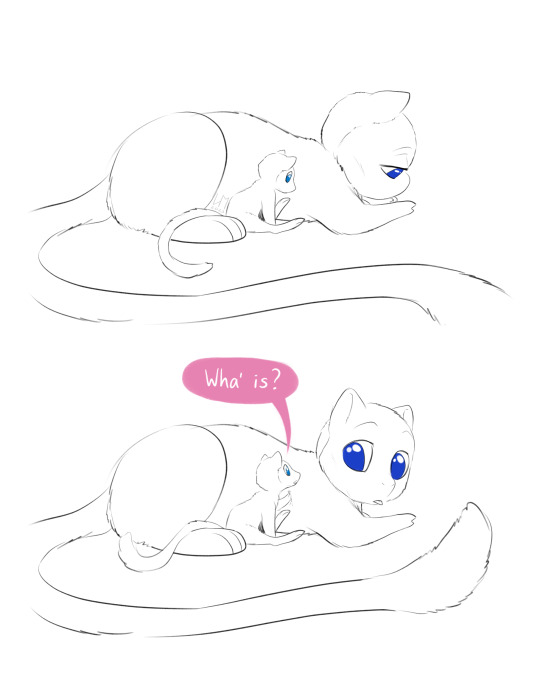
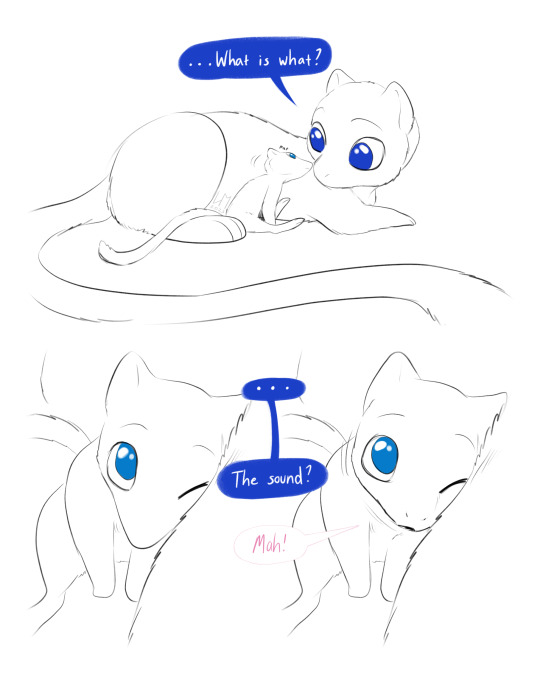
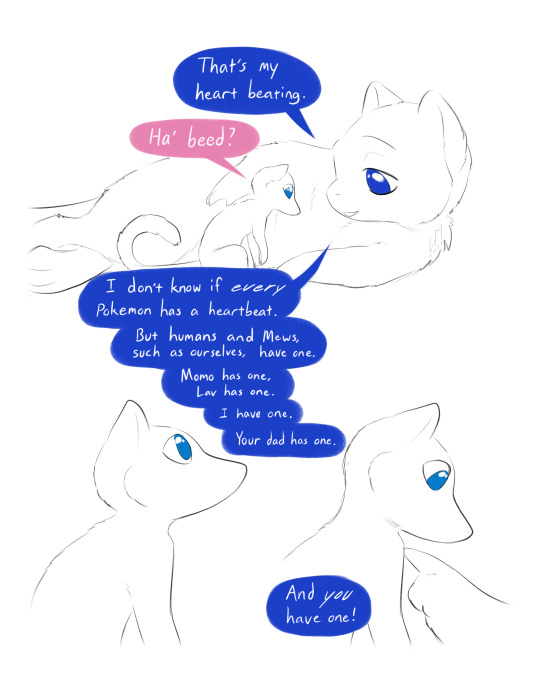




He float. :>
As a reminder, I'm doing white words on colored bubbles to denote Pokespeak.
2K notes
·
View notes
Text



Cleaning out old art no then realized I never actually posted some of the goofy shit I was making behind the scenes for/with @loupy-mongoose she whittled away at the dead Randy arc X3
So here’s some of that! And there was an old ass comic I did about a discussion between Meau and Randy I’ll slap up on @meaumania later ^^
#linden roots#loupy mongoose#ancient mew#mew#pokemon#mew pokemon#the ancient mew#pokémon mew#mewtwo#pokemon mewtwo
300 notes
·
View notes
Text

OK last one for now I just REALLY love this guys long snoot @loupy-mongoose
#mew#pokemon#artist#fanart#linden roots#pardon that its not done hes just really fun to like;;; doodle a lot JBFGDH#i couldnt decide which way i wanted to draw his face or expression i just rlly love tired characters and wanted to doodle him !#give him some hot tea and a blanket#he needs a nap#mythart
152 notes
·
View notes
Text
Wasn’t sure if I should post this here in my more mew related blog or in my main blog (@littlelaurendraws) but I’ll just put it here
Randy, Akoya, Persim, Momo/Monique, Midas, Rosemary, & Lavender are from @loupy-mongoose
TW Death and Mentions of Death
SPOILERS FOR NEWEST LINDENS STORY PART
I saw the latest part with Randy’s death and doodled some stuff of it while in class (except them all as mews/mewtwos cause I suck at drawing humans) :3

Sorry if the lighting is kinda bad
(I drew Midas from memory so the spots are probably in the wrong places or smth)
(Ignore the math in the middle, Randy totally died because of it lol)
75 notes
·
View notes
Text


Meeting @loupy-mongoose 's Lindens! I'll be honest, I had a LOT of ideas. And I wanted to do them all digitally, haha. This is what I settled on, though, I hope that's alright. Randall's story and his having a phobia(ish?) of ghost types definitely suggest that he would most surely not like Violet at first, and Violet is very confused and a little disturbed by what he senses in Randall. Ultraviolet would ease up though- after a bit of an awakening, he'll be his sweet self again, haha.
Randall seems to want to protect the babs from what could very well be literal Death, though...
75 notes
·
View notes
Text
March 2024 witch guide
Full moon: March 25th
New moon: March 10th
Sabbats: Ostara-March 19th
March Worm Moon
Known as: Crow Moon, Eagle Moon, Goose Moon, Hrethmonath, Lenting moon, Lentzinmanoth, Moon of Snowblind, Moon of Winds, Plow Moon, Sap Moon, Seed Moon, Sore Eyes Moon, Storm Moon, Sugar Moon & Wind Strong Moon
Element: Water
Zodiac: Pisces & Aries
Nature spirits: Air & water spirits & Mer-people
Deities: Artemis, Astarte, Athena, Cybele, Isis, Luna & Minerva
Animals: Boar, cougar & hedgehog
Birds: Sea crow & sea eagle
Trees: Alder, dogwood & honeysuckle
Herbs: Apple blossom, broom, high John root, Irish moss, pennyroyal, wood betony & yellow dock
Flowers: Daffodil, jonquil & violet
Scents: Apple blossom & honeysuckle
Stones: Aquamarine, bloodstone, jasper, opal &topaz
Colors: Pale-green, red, violet, yellow & white
Energy: Balance, beginnings, dream work, energy breaking into the open, exploring, fertility, inner development, karma, prosperity, spirituality, success & truth seeking
For many years, it was thought that the name "Worm Moon" referred to the earthworms that appear as the soil warms in spring. This invites robins and other birds to feed—a true sign of spring.
However, more research revealed another explanation. In the 1760s, Captain Jonathan Carver visited the Naudowessie (Dakota) and other Native American tribes and wrote that the name Worm Moon refers to a different sort of “worm”—beetle larvae—which begin to emerge from the thawing bark of trees and other winter hideouts at this time.
March’s full Moon often plays a role in religion, specifically in Christianity, this Moon is known as the Lenten Moon if it is the last full Moon of the winter season (i.e., if it occurs before the spring equinox) or as the Paschal Full Moon if it is the first full Moon of spring (i.e., if it occurs after the spring equinox).
Ostara
Known as: Alban Eiler, Lady Day & Spring/Vernal equinox
Season: Spring
Symbols: 8-spoked wheel, butterflies, chicks, decorated baskets, eggs, feathers, jellybeans, lambs, rabbits, seeds, shamrocks, spring flowers & sunwheels
Colors: Green, indigo, light blue, pastels, pink, red & yellow
Oils/Incense: African violet, florals, ginger, jasmine, lotus, magnolia, rose, sage & strawberry
Animals: Cormorant, hare, hawk, rabbit, sheep, sparrow & swallow
Mythical: Dragon & Unicorn
Stones: Amethyst, aquamarine, bloodstone, moonstone, red jasper & rose quartz
Food: Dairy foods, eggs(hard boiled), fruits, honey, honey cakes, leafy greens, vegetables, pine nuts, pumpkin, sunflower seeds, sprouts & waffles
Herbs/Plants: Acorn, cinquefoil, dogwood, ginger, Irish moss, olive, strawberry & woodruff
Flowers: Celandine, crocus, daffodil, dandelion, Easter lily, jasmine gorse, honeysuckle, hyssop, iris, jonquil, linden, narcissus, peony, snowdrop, tansy & violet
Goddesses: Aphrodite, Ariadne, Artemis, Athena, Coatlicue, Cybele,Demeter, Diana, Eos, Eostre, Flora, Gaia, Hera, Idunn, Iris, Ishtar, Juno, Minerva, Persephone, Venus & Vesta
Gods: Adonis, Attis, Celi, Cernunnos, Coel, Dagda, Dalon ap Landu, Dumuzi, Green Man, Lord of the Greenwood, Mithras, Odin, Osiris, Ovis & Pan
Issues, Intentions & Powers: Agriculture, balance, beauty, fertility, growth, life, love & rebirth/renewal
Spellwork: Air magick, fertility, new beginnings & water magick
Activities:
• Go on a hike/walk & look for signs of spring
• Add Ostara symbols to decorate your altar space
• Plant vegetable &/or flower seedlings
• Decorate eggs with bright colors
• Set your intentions for the weeks/months ahead
• Start a new class or hobby
• Create eggshell candles
• Make plans & new routines for the future
• Participate in rituals & ceremonies that connect you with energy & the life force of nature
• Have a feast with your friends &/family with sprouts & leafy greens
• Bake hot cross buns or lavender/lemon flavored treats
• Clean & de-clutter your home
• Try a re-birthing/ renewing ritual
• Bring fresh flowers or plants into into the home
• Host a spring & floral themed tea party
• Make egg based food dishes & desserts
This holiday marks the Spring Equinox, which happens before March 19-22. It is the second of three spring celebrations (the midpoint between Imbolc and Beltane) during which light & darkness are again in balance, with light on the rise. It is a time of new beginnings & of life emerging further from the grips of winter.
There is much debate regarding the origins of Ostara due to the lack of primary sources about this sabbat. One theory is the name of Ostara came from the Anglo-Saxon goddess Eostre. Another theory is that Eostre is more of a localized goddess in Kent County, England. Despite the questions of her origins, Eostre is associated with modern-day Pagan traditions of Ostara.
There is no evidence that the ancient Greeks or Romans celebrated Ostara, although they did celebrate their own spring festivals, such as the Roman festival of Floralia & the Greek festival of Anthesteria. It was a time to honor the returning sun, fertility & rebirth.
Related festivals:
• Nowruz- March 19th
Nowruz marks the first day of spring & renewal of nature. It is celebrated on the day of the astronomical vernal equinox. It is also celebrated as the beginning of the new year by people all around the world for over 3,000 years in the Balkans, the Black Sea Basin, the Caucasus, Central Asia, the Middle East & other regions.
It promotes values of peace & solidarity between generations & within families as well as reconciliation & neighbourliness. Nowruz plays a significant role in strengthening the ties among peoples based on mutual respect & the ideals of peace and good neighbourliness.
Traditional customs of Nowruz include fire & water, ritual dances, gift exchanges, reciting poetry, symbolic objects & more; these customs differ between the diverse peoples & countries that celebrate the festival.
• Holi- March 25th
Holi is a popular & significant Hindu festival celebrated as the The festival of colors, Love &Spring. It commemorates eternal and divine love of the deities Radha & Krishna. Additionally, the day signifies the triumph of good over evil, as it celebratess the victory of Vishnu as Narasimha over Hiranyakashipu. Holi originated & is predominantly celebrated in the Indian subcontinent, but has also spread to other regions of Asia & parts of the Western world through the Indian diaspora.
Holi also celebrates the arrival of Spring in India, the end of winter & the blossoming of love. It is also an invocation for a good spring harvest season. It lasts for a night & a day, starting on the evening of the Purnima (full moon day) falling on the Hindu calendar month of Phalguna, which falls around the middle of March in the Gregorian calendar.
• Easter- March 31st
also called Pascha or Resurrection Sunday is a Christian festival & cultural holiday commemorating the resurrection of Jesus from the dead, described in the New Testament as having occurred on the third day of his burial following his crucifixion by the Romans at Calvary c. 30 AD. It is the culmination of the Passion of Jesus Christ, preceded by Lent (or Great Lent), a 40-day period of fasting, prayer, & penance.
Easter traditions vary across the Christian world & include sunrise services or late-night vigils, exclamations & exchanges of Paschal greetings, flowering the cross & the decoration and the communal breaking of Easter eggs (a symbol of the empty tomb) among many others. The Easter lily is a symbol of the resurrection in Western Christianity traditionally decorates the chancel area of churches on this day & for the rest of Eastertide. Additional customs that have become associated with Easter & are observed by both Christians & some non-Christians include Easter parades, communal dancing, the Easter Bunny & egg hunting.
Other Celebrations:
• Festival of Luna- March 31st
Is a feast day honoring the Goddess Luna who is seen as the divine embodiment of the Moon.
The Temple of Luna was a temple on the Aventine Hill in Rome, dedicated to Luna, the moon goddess. Its dedication was celebrated on March 31st, thus the celebration.
According to Tacitus, it was built by king Servius Tullius. However, the first confirmed reference to a temple to Luna dates to 182 BC & refers to one of its doors being knocked off its posts by a miraculous blast of air & shot into the back of the Temple of Ceres. That account probably places the temple at the north end of the hill, just above porta Trigemina. The temple was struck by lightning around the time of the death of Cinna, as was the temple of Ceres. After the destruction of Corinth, Lucius Mummius Achaicus dedicated some of his spoils from the city to this temple. It was destroyed in the Great Fire of Rome in 64 AD & not rebuilt.
Sources:
Farmersalmanac .com
Llewellyn's Complete Book of Correspondences by Sandra Kines
Wikipedia
A Witch's Book of Correspondences by Viktorija Briggs
Encyclopedia britannica
Llewellyn 2024 magical almanac Practical magic for everyday living
#correspondences#sabbat#wheel of the year#ostara#Worm Moon#witch community#witchblr#wiccablr#paganblr#witchcraft#witches of tumblr#tumblr witch community#tumblr witches#full moon#witch guide#witch tips#traditional witchcraft#spellbook#grimoire#book of shadows#beginner witch#baby witch#full moon magick#witchcore#GreenWitchcrafts#pagan#wicca#witch#witchy tumblr#spells
231 notes
·
View notes
Text
Herbs & Correspondences G-L

Galangal Root - Also called Lo John the Conqueror or Lo John. Carry into legal proceedings to help win. Money, gambling and hex breaking. Also aids luck and psychic development. Element Fire.
Garlic - Magical uses include speed, health and endurance, also protection, exorcism and purification. Use also to promote your inner strength. Element Fire.
Gentian - Increases spell power. Good luck and works well in love & romance spells. Element Fire.
Ginger - Increases magic power. Success, love, money and power. Element Fire.
Ginseng - Promotes love, beauty, healing and lust. Element Fire.
Hawthorn Wood- Associated with Beltane. Magical uses include chastity, fertility, fairy magic, fishing magic, and rebirth. Success in career, work, and employment. Use it to work with the fae. Used in weddings and handfasting's to increase fertility. Element Water. Hawthorne Berries aid chastity. Hope, protection and happiness. Element Fire.
Hearts Ease - Also called Violet. It helps to mend a broken heart. Aids rebirth, peace, wishes and luck. Calms the nerves and promotes peace and tranquility. Element Water.
Hemlock - Use to paralyze a situation and a funeral herb. Highly Toxic. Element Water.
Henbane - Dried leaves are used in the consecration of ceremonial vessels. Used in love sachets and charms to gain the love of the person desired. Highly Toxic. Element Water.
Hibiscus - Attracting love and lust. Use in divination. Associated with lunar magic. Element Water.
High John - (The Conqueror) An "all purpose" herb. Use it for strength, confidence, conquering any situation. Good luck, prosperity and protection. Element Fire.
Holly Hock - Protecting, all Fairy magic, abundance, personal growth and aids passing. Related to Lammas. Element Earth.
Horehound - Protective against evil doings. Helps with mental clarity during ritual; stimulates creativity/inspiration; balances personal energies and healing. Element Earth.
Horsetail - Use for strength and resolve. Protection, cleansing and clearing unwanted emotions. Element Earth.
Hyssop - Used for purification. Banishing, protection and healing. Element Fire.
Irish Moss - Used for luck. Ideal for gamblers! Attracts money and customers for self-employed. Offers protection. Element Water
Ivy - Protection, healing and fertility. Use for love and hang at handfasting's. Element Fire.
Jasmine - The herb of attraction. Helps prophetic dreaming, money and love. Element Water.
Juniper - See Cedar berries.
Lady's Mantle - Aphrodisiac and transmutation. Use in love spells and those of fertility. Increases magic power in spells and connects with fairy lore. Element Water.
Laurel- See Bay leaf.
Lavender - Magical uses include healing, sleep and peace. It also promotes chastity and love. Increases longevity of life, tranquility and happiness. Element Air.
Lemon Balm - Also called Melissa. Love, success and healing. Aids psychic/spiritual development. Supports mental health disorders and compassion. Element Water.
Lemon Grass - Psychic cleansing and opening. Use in lust potions and when using Dragon Magic. Element Air.
Licorice Root - Love, lust, and fidelity. Also attracts passion. Element Water.
Lilac - Wisdom, memory, good luck and spiritual aid. Element Water.
Linden Flower - Wisdom, justice, love and protection. Element Air.
Lime Tree Leaf - Healing, calm and love. Aids strength and tranquility. Element Air.
Little John - See Galangal root.
Lungwort - Use in air magic or as an offering to the Gods of air. Offers safe travel when flying. Element Air.
#witch#witchcraft#witchblr#pagan#wicca#witches#pagan witch#paganism#pagan wicca#polytheism#herbsforspells#herbalism#herbs#herb correspondences
60 notes
·
View notes
Text
Alright, this blog has been long overdue for a pinned post.
Welcome to Shadegrove!
This is a Sideblog of @loupy-mongoose, telling the Linden Roots story from the setting of Shadegrove--A location made up by me, set in the woods at the very northmost edge of Kanto, close to Cerulean Cave.
This blog is meant to primarily follow the Mewtwo Nicodemus and his Mew mate Jovial, but there are other characters that live in this town as well. So, general Shadegrove shenanigans as my imagination drives me to tell. ^^
Chrono link for the whole story on this blog!
(Something important to know about the chrono; there comes a point where the continuity kind of... snaps, due to me losing interest in this blog for a long while and moving the story along elsewhere.)
Prominent Characters of Shadegrove:
Nicodemus, or Nico: The original Mewtwo of my world. He is reserved, preferring to live in his cave apart from everyone except his mate, Jovie.
Open for questions? NO
Jovial, or Jovie: An upbeat Mew who was orphaned and later found by a human, who raised her in Shadegrove. She now basically works at the Pokemon Center.
Open for questions? NO
Jamie Wild Rennard: A Champion Rank trainer devoted to the protection of her home and loved ones. She can be off-putting to strangers.
Open for questions? YES
Cody Rennard: Like his wife, he is a Champion Rank trainer. Unlike her, he strives to be as friendly as he can with everyone he meets.
Open for questions? YES
Pari: A laid-back Mew. She was found and raised by Cody as a baby, and loves him as a big brother.
Open for questions? YES
Guests open for Questions:
The Linden Family: YES
Other local Pokemon: Not Yet
Note: I'll do my best to keep this updated! ^^
I'm going to be particular about in-character interaction asks, should they arise. I won't say don't send them, but I'm going to be choosy.
53 notes
·
View notes
Text
In-universe it is early November



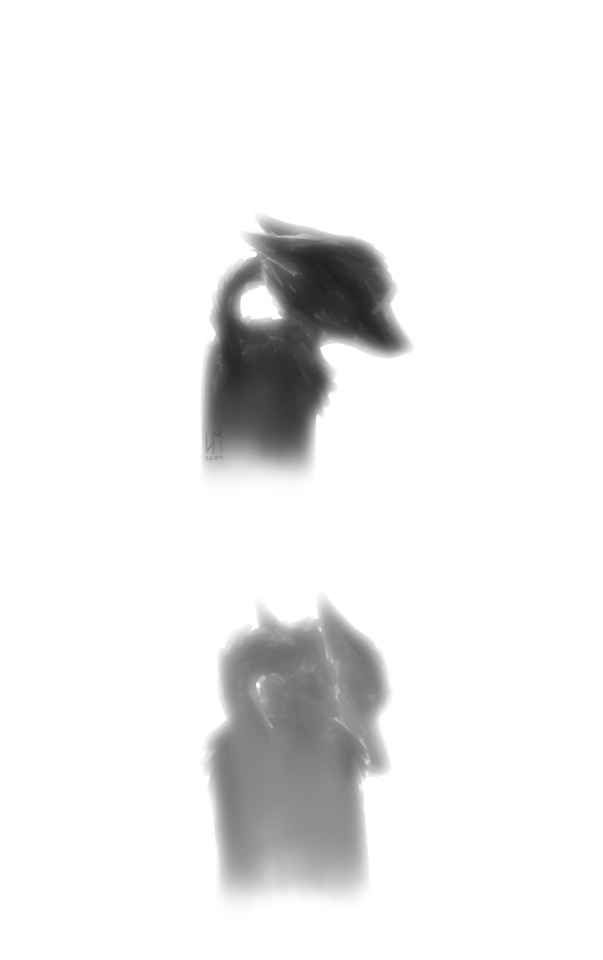
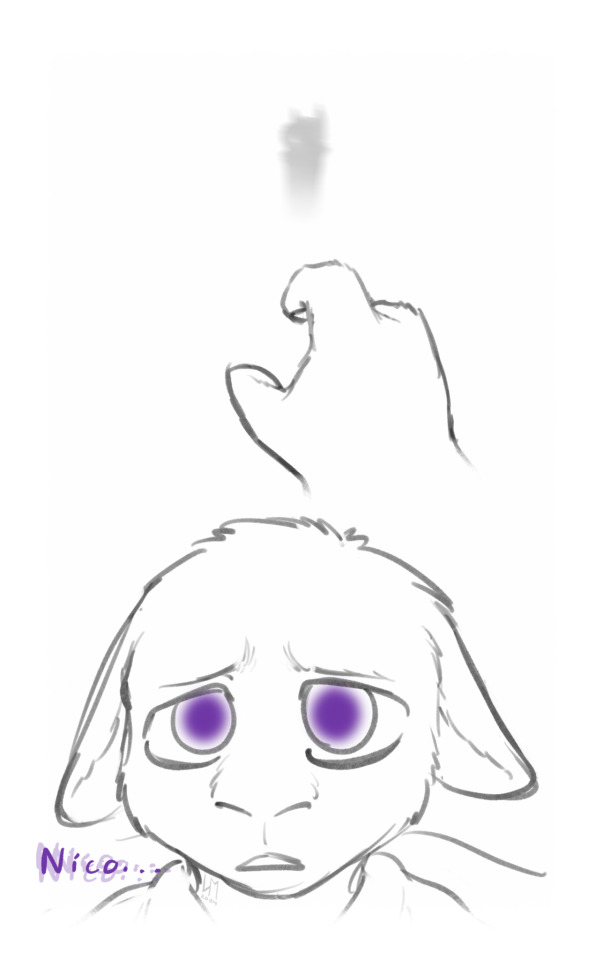


~~~~~~
The little Mewtwo floated sadly into the busy heart of Mr. Fuji's house. She could hear her parents chattering, and the clatter of dishes. A shrill squeal sounded from Momo. Despite the lingering mood of her night meeting, Lav couldn't fight a slight smile as her dad gently reprimanded the little pink Mew.
As she approached her parents, Akoya caught her eye and gave her a soft smile herself. Good morning, Lav.
Morning...
She tried to ignore her dad's eyes boring into her.
Rough sleep?
The pale purple feline gave him a side look, unable to meet his eyes. ...Kinda...
She didn't want to admit how much Nico's avoidance hurt her.
Still not able to connect with Nico?
She couldn't stop herself from locking eyes with him this time. She opened her mouth to speak, but nothing came out. Randy's blue eyes were shimmering with sympathy.
Sympathy that felt misplaced.
She looked away, and wrapped her arms around herself. Her dad stood up from his seat at the table and stepped toward her, taking her into his own arms.
I just wanna say I'm sorry... Tears filled Lavender's eyes. I don't care if he accepts it or not... I just want him to know I didn't mean it...
Randy held her close and rubbed her shoulder. He sighed, but didn't seem to know what to say.
Then she caught a feeling from him--something nagging in his mind that he didn't want to say out loud.
She took a breath and looked up at him. What?
He flinched as if upset about getting caught. But he didn't try to pretend it hadn't happened. He sighed again. Lav... We... We need to think about going back home soon...
Somehow, hearing that didn't surprise her. They'd been here for a long time, now. The shiny trio could only care for the house for so long by themselves.
I know...
He gave her a squeeze. I'm sorry, Hon...
Lav felt another pang of guilt, struggling to conceal it from her family. It's not your fault...
Her father's response was firm, but filled with warmth.
It's not yours either.
Ah.
He'd caught it.
She let his words tumble in her mind, trying to convince herself he was right. She sighed, and pushed away from him. Thanks, Dad... She looked toward the front door. I'm gonna go for a walk... I just... want some time to think...
Randy gave her a gentle rub on the head. Okay. Hope it's a good one. He then gave her a small kiss. Do remember, though, you can always talk to us if you need to, Lav. We love you.
Lav smiled at him, feeling the deep truth of that statement. Love you too, Dad. She transformed into her human form and hugged him. I'll talk to you later.
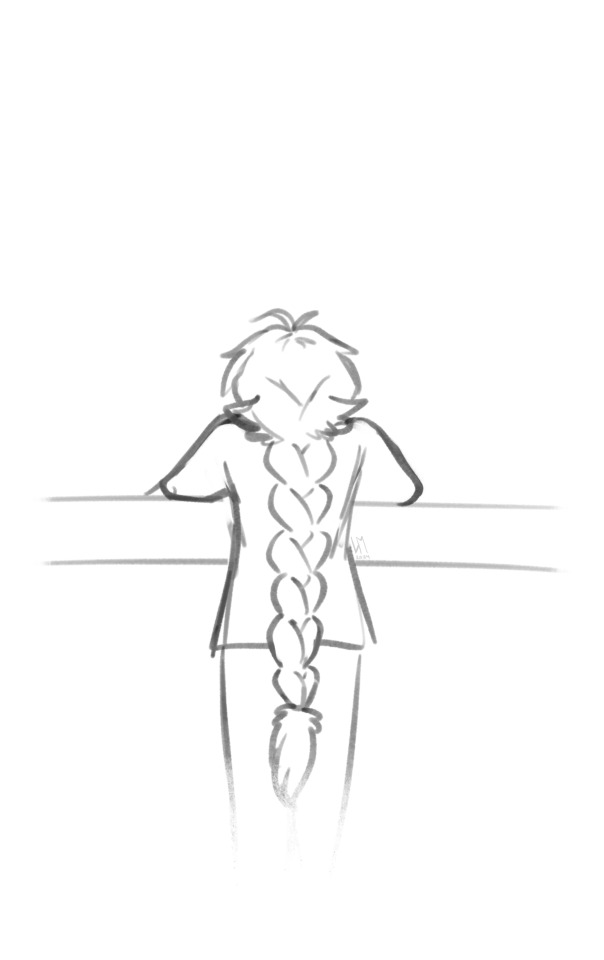







:>
461 notes
·
View notes
Note
It's funny how, as soon as I saw Randy's new design, I just knew that you had some sort of influence in it XD
Idk what, but something about it just had "you" written all over it
It was the gradients… it was the gradients wasn’t it
Jokes aside, I didn’t do all that much, mostly just come patterns concepts!
Also slapping a read more for spoilers!

I shared a few of these back and fourth with Loups while she was hammering out ideas! Top left you can see the concept she had at the time! She toyed around with some lovely colour pallets before settling on this beautiful final one!!
This was actually version 2 of Randy’s ghost form! She had a much earlier one that was closer to his “Mo” design, but went with this absolute banger instead >;3

The stuff she liked ended up being his under eye markings and full body streak! Darkening his tail tip a bit, as well as keeping the more gradient esc whipsy whites on his hair, tail base, tail tip, and footys!
The final one she gave the gradients a lot more purpose with the streaks to emphasize his new main! And the final thingy he got was his glorious lil turtle neck >;3
So in the end, i just helped spruce up some patterns and give her stuff to work with, she did AMAZING putting it all together into his floofy masterpiece!! >w<
Also just to make sure, Randy belongs to @loupy-mongoose Phenomenal story, Linden Roots ;3
96 notes
·
View notes
Photo
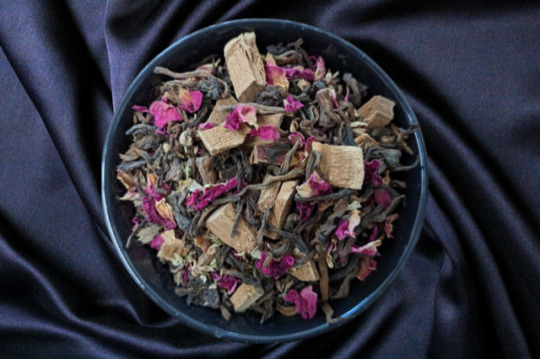
Finally, finally we can say: Fallen London has an official companion tea!
We’ve been very blessed to work with Friday Afternoon Tea on an official custom tea blend based on our games!
Friday Afternoon Tea is a geeky, family-owned tea company based in Seattle, USA. Owner Friday Elliott’s unique take on tea blending stems from a neurological cross-wiring known as Lexical-Gustatory Synesthesia: she experiences language (both spoken and written) and abstract concepts as distinct flavour profiles. In short, she literally tastes words and ideas. I've longed to create a tea blend for Fallen London, and as soon as I heard about her work, I was struck with a very compelling desire to know what the Neath would taste like when filtered through her remarkable talent. I’m delighted to share that after discussing and playing our games, she’s come up with something wonderfully apropos.
Love & Murder is a deep, delectable draught with a perfect balance of heady floral and dank earthy notes. The blend features puer aged tea, reishi mushroom, rose petal, linden flower and roasted dandelion root.
It’s just the thing to brew up for a long evening in with Mask of the Rose. I hope you’ll give it a try, and I’d like to thank my colleagues and the members of the community who were able to taste test it with us at our last live event!
Try some yourself!
230 notes
·
View notes
Text
Cryptidclaw's WC Prefixes List!
Yall said you were interested in seeing it so here it is!
This is a collection of mostly Flora, Fauna, Rocks, and other such things that can be found in Britain since that’s where the books take place!
I also have other Prefixes that have to do with pelt colors and patterns as well!
Here’s a link to the doc if you dont want to expand a 650 word list on your Tumblr feed lol! the doc is also in my drive linked in my pined post!
below is the actual list! If there are any names you think I should add plz tell me!
EDIT: I will update the doc with new names as I come up with them or have them suggested to me, but I wont update the list on this post! Plz visit my doc for a more updated version!
Animals
Mammal
Badger
Bat
Bear
Beaver
Bison
Boar
Buck
Calf
Cow
Deer
Elk
Fawn
Ferret
Fox
Goat
Hare
Horse
Lamb
Lynx
Marten
Mole
Mouse
Otter
Rabbit
Rat
Seal
Sheep
Shrew
Squirrel
Stoat
Vole
Weasel
Wolf
Wolverine
Amphibians
Frog
Newt
Toad
Reptiles
Scale
Adder
Lizard
Snake
Turtle
Shell
Birds
Bird
Down
Feather
Albatross
Bittern
Buzzard
Chaffinch
Chick
Chicken
Coot
Cormorant
Corvid
Crane
Crow
Curlew
Dove
Duck
Dunlin
Eagle
Egret
Falcon
Finch
Gannet
Goose
Grouse
Gull
Hawk
Hen
Heron
Ibis
Jackdaw
Jay
Kestrel
Kite
Lark
Magpie
Mallard
Merlin
Mockingbird
Murrelet
Nightingale
Osprey
Owl
Partridge
Pelican
Peregrine
Petrel
Pheasant
Pigeon
Plover
Puffin
Quail
Raven
Robin
Rook
Rooster
Ruff
Shrike
Snipe
Sparrow
Starling
Stork
Swallow
Swan
Swift
Tern
Thrasher
Thrush
Vulture
Warbler
Whimbrel
Wren
Freshwater Fish
Fish
Bass
Bream
Carp
Dace
Eel
Lamprey
Loach
Minnow
Perch
Pike
Rudd
Salmon
Sterlet
Tench
Trout
Roach
Saltwater fish and other Sea creatures (would cats be able to find some of these? Probably not, I don't care tho)
Alge
Barnacle
Bass (Saltwater version)
Bream (Saltwater version)
Brill
Clam
Cod
Crab
Dolphin
Eel (Saltwater version)
Flounder
Garfish
Halibut
Kelp
Lobster
Mackerel
Mollusk
Orca
Prawn
Ray
Seal
Shark
Shrimp
Starfish
Sting
Urchin
Whale
Insects and Arachnids
Honey
Insect
Web
Ant
Bee
Beetle
Bug
Butterfly
Caterpillar
Cricket
Damselfly
Dragonfly
Fly
Grasshopper
Grub
Hornet
Maggot
Moth
Spider
Wasp
Worm
Trees
Acorn
Bark
Branch
Forest
Hollow
Log
Root
Stump
Timber
Tree
Twig
Wood
Alder
Apple
Ash
Aspen
Beech
Birch
Cedar
Cherry
Chestnut
Cypress
Elm
Fir
Hawthorn
Hazel
Hemlock
Linden
Maple
Oak
Pear
Poplar
Rowan
Redwood
Spruce
Willow
Yew
Flowers, Shrubs and Other plants
Berry
Blossom
Briar
Field
Flower
Leaf
Meadow
Needle
Petal
Shrub
Stem
Thicket
Thorn
Vine
Anemone
Apricot
Barley
Bellflower
Bluebell
Borage
Bracken
Bramble
Briar
Burnet
Buttercup
Campion
Chamomile
Chanterelle
Chicory
Clover
Cornflower
Daffodil
Daisy
Dandelion
Dogwood
Fallow
Fennel
Fern
Flax
Foxglove
Furze
Garlic
Ginger
Gorse
Grass
Hay
Heather
Holly
Honeysuckle
Hop
Hyacinth
Iris
Ivy
Juniper
Lavender
Lichen
Lilac
Lilly
Mallow
Marigold
Mint
Mistletoe
Moss
Moss
Mushroom
Nettle
Nightshade
Oat
Olive
Orchid
Parsley
Periwinkle
Pine
Poppy
Primrose
Privet
Raspberry
Reed
Reedmace
Rose
Rush
Rye
Saffron
Sage
Sedge
Seed
Snowdrop
Spindle
Strawberry
Tangerine
Tansy
Teasel
Thistle
Thrift
Thyme
Violet
Weed
Wheat
Woodruff
Yarrow
Rocks and earth
Agate
Amber
Amethyst
Arch
Basalt
Bounder
Cave
Chalk
Coal
Copper
Dirt
Dust
Flint
Garnet
Gold
Granite
Hill
Iron
Jagged
Jet
Mountain
Mud
Peak
Pebble
Pinnacle
Pit
Quartz
Ridge
Rock
Rubble
Ruby
Rust(y)
Sand
Sapphire
Sediment
Silt
Silver
Slate
Soil
Spire
Stone
Trench
Zircon
Water Formations
Bay
Cove
Creek
Delta
Lake
Marsh
Ocean
Pool
Puddle
River
Sea
Water
Weather and such
Autumn
Avalanche
Balmy
Blaze
Blizzard
Breeze
Burnt
Chill
Cinder
Cloud
Cold
Dew
Drift
Drizzle
Drought
Dry
Ember
Fall
Fire
Flame
Flood
Fog
Freeze
Frost
Frozen
Gale
Gust
Hail
Ice
Icicle
Lightening
Mist
Muggy
Rain
Scorch
Singe
Sky
Sleet
Sloe
Smoke
Snow
Snowflake
Soot
Sorrel
Spark
Spring
Steam
Storm
Summer
Sun
Thunder
Water
Wave
Wet
Wind
Winter
Celestial??
Comet
Dawn
Dusk
Evening
Midnight
Moon
Morning
Night
Noon
Twilight
Cat Features, Traits, and Misc.
Azure
Beige
Big
Black
Blonde
Blotch(ed)
Blue
Bounce
Bright
Brindle
Broken
Bronze
Brown
Bumble
Burgundy
Call
Carmine
Claw
Cobalt
Cream
Crimson
Cry
Curl(y)
Dapple
Dark
Dot(ted)
Dusky
Ebony
Echo
Fallen
Fleck(ed)
Fluffy
Freckle
Ginger
Golden
Gray
Green
Heavy
Kink
Knot(ted)
Light
Little
Lost
Loud
Marbled
Mew
Milk
Mottle
Mumble
Ochre
Odd
One
Orange
Pale
Patch(ed)
Pounce
Prickle
Ragged
Red
Ripple
Rough
Rugged
Russet
Scarlet
Shade
Shaggy
Sharp
Shimmer
Shining
Small
Smudge
Soft
Song
Speckle
Spike
Splash
Spot(ted)
Streak
Stripe(d)
Strong
Stump(y)
Sweet
Tall
Talon
Tangle
Tatter(ed)
Tawny
Tiny
Tough
Tumble
Twist
Violet
Whisker
Whisper
White
Wild
Wooly
Yellow
#cryptidclaw's warriors au#?#Im tempted to use these in the au#some characters deserve some more fun names hehe#rise of change#warrior cats#warrior cats design#warriors#warriors names#warriors naming#warriors prefixes
542 notes
·
View notes
Text

Fan art of the lovely mew Akoya Linden she's from the really cool series of Linden Roots which belongs to @loupy-mongoose
69 notes
·
View notes
Text
Herbalism in Times of Turmoil
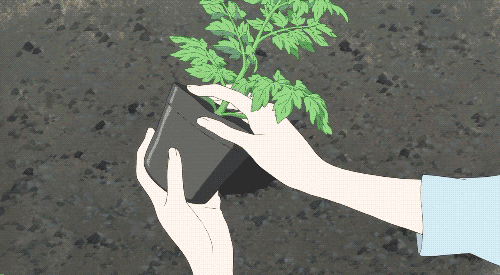
I've recently returned to my roots (pun intended) in folk herbalism to supplement the work I'm doing with my therapist. It wasn't an intentional thing -- in our current round of EMDR, we've uncovered some deeply buried trauma, and bringing that trauma to the surface has shaken the foundations of how I see myself and the world around me. I feel very raw and vulnerable. I feel disoriented and fragile.
I find myself drawn to plant medicine as I navigate this trauma with the help of my therapist. I think a part of me longs for the sympathetic magic of plants -- by taking them into my body, maybe I, too, can become firmly rooted, supported by the earth and nourished by the sun. Maybe I can relearn the magics of stillness and connection. Maybe I can reintegrate into the earth's cycles of death and rebirth.
Some of the plants I'm partnering with in this work are old friends. Others are new allies, recommended by professional herbalists for the type of trauma I'm processing. All of them are supportive in different ways, and all of them have important lessons.
Obviously, I am working with herbs as a compliment to the work I'm doing with a professional mental health counselor, not as a replacement for medical/psychological care. I recommend you do the same, especially if dealing with complex trauma. Even if money is tight, you may be able to get free or low-cost counseling through local social services, nonprofits, university hospitals, etc.
How I Work with Herbs
As an animist, I see working with herbs both as physical medicine and as a working relationship with the spirit of the plant. I don't like to say that I "use" herbs, because that implies that they are just tools. When I say I "work with" an herb, what I mean is that I am partnering with that plant as a living, thinking being that has kindly chosen to support my healing process. I try to honor that relationship in every part of my herbalist craft.
One way I do this is by verbally thanking the plants that I consume as medicine. If I'm drinking a cup of linden tea, I'll say something like, "Thank you, linden, for aiding in my healing today."
I try to use herbal preparations that allow for a sensory experience to help me connect with the plant spirit(s). I don't like taking capsules full of powdered herbs, because that doesn't allow me to see, touch, smell, or taste the plant. I like teas because they allow for a much more intimate connection with the plant's spirit, and I use tinctures when I feel like I need more concentrated medicinal compounds.
I'm a witch who loves plants, but when I'm working with herbs internally, I do not choose them based on their magical or spiritual correspondences. When choosing herbs, I look for quality scientific studies that prove their medicinal benefits, but honestly a lot of plant medicine hasn't been sufficiently studied yet. Because of this, I also look at the way plants are viewed in traditional healing modalities like Western herbalism, Ayurveda, Traditional Chinese Medicine, etc.
While I don't pick them based on their magical properties, I do think studying how these plants are used in magical practices can add an extra layer to my work with them. This helps me to have a more nuanced, deep, and complex relationship with the plant's spirit.
And of course, I always research contraindications and drug interactions before using an herb. For example, I don't recommend Saint John's Wort to anyone taking any kind of pharmaceutical medication because it really messes with the way your body processes your meds. It's also important to research how herbs might interact with other herbs and supplements you're already taking -- that's also a type of drug interaction!
I also try to remember that when we're moving through grief or processing trauma, this changes the way herbs (and drugs, for that matter) affect our bodies. I highly recommend the book The Trauma-Informed Herbalist by Elizabeth Guthrie to learn more about this.
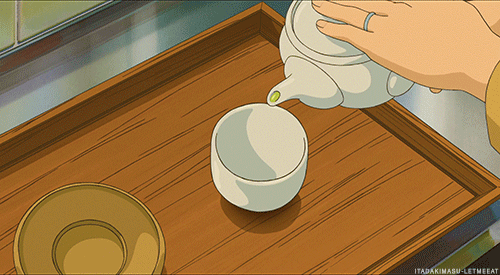
My Herbal Allies
These are the herbs I'm taking focusing my practice on right now:
Ashwagandha and Tulsi are two plant friends that I love pairing together. They're both adaptogens, meaning they can help manage the body's stress response, and come to Western herbalism by way of Ayurveda. I've been working with both of these plants for years, and although they do have different uses, I think they work really well together.
Ashwagandha is really helpful as a pick-me-up for the endocrine system (the system that produces hormones) and nervous system. I find that it has a very grounding effect and is especially helpful for when I feel overwhelmed or burned out. It's a great ally for building resilience when you feel like there's just way too much going on and have no idea how you're going to handle it all. It has a very bitter taste, so I usually add it to coffee or another very bitter beverage.
Tulsi, also called Holy Basil, is a lot more gentle and laid-back than ashwagandha, at least in my experience. It's one of my go-to herbs when I need emotional support. According to herbalists Katja Swift and Ryn Midura, "Tulsi has traditionally been the herb of choice for 'stuck emotions,' whether that's depression or PTSD or just a case of the grumpies." It has a delicious taste somewhere between basil and mint, and I love preparing it as a hot tea. This is one of my favorite herbs right now.
In Ayurveda, ashwagandha is classified as a Rasayana, which means it rejuvenates the body and can promote long life. It is also a Bhalya, meaning it promotes strength, and a Vajikara, which means it promotes healthy sexuality. Tulsi is one of the most valued herbs in Ayurveda and is even called the most sacred plant on earth in the Vedic Puranas. It increases sattva (light, clarity), uplifts the spirit, promotes joy and harmony, and increases prana (vital energy; similar to the concept of chi in China). They're sometimes used together because they're believed to support each other and enhance each other's effects.
I add ashwagandha and tulsi tinctures to my morning coffee and to other hot beverages throughout the day. I also really like tulsi as a tea, and tulsi tea is one of my go-to tools for replenishing my energy after a long day of tarot readings. That being said, I'm considering changing the way I consume these herbs to be more in line with traditional Ayurvedic practices, but I need to do more research first.
Cannabis is, honestly, one of my personal miracle workers, which is a little bit ironic because I also think it's waaaaay overhyped in the wellness industry right now. Cannabis is not a cure-all, and it is not recommended for everyone. There are several different types of cannabis, and each type has its own medicinal uses. For example, the cannabis I use in my personal practice is hemp, which is legally defined as cannabis with little to no THC, meaning it does not produce a high. Marijuana, the type of cannabis with THC, is powerful medicine for some people, but because of how my body and brain work, I personally don't use it. While marijuana use may be illegal depending on where you live, hemp is legal in most places.
I started working with cannabis several years ago to help manage anxiety and insomnia, but nowadays I mostly work with it to help with inflammation and chronic pain.
I find that my body really holds on to trauma in the form of tension, inflammation, and chronic pain. When my trauma response is triggered, I usually feel it as tension or pain, especially in my hips, pelvis, and lower back. I find cannabis really helpful for that stored trauma. It doesn't make the pain go away, but it helps me feel into it and navigate through it. I also find cannabis is really good at relaxing my body and helping me let go of that stored up trauma, almost like unclenching a fist.
Cannabis was historically used throughout the ancient world for divination and religious ritual. It's associated with connection to the spirit world, and may have been used in magical practices like the Norse practice of seidr. Scott Cunningham says hemp is associated with love spells and with Midsummer.
My favorite way to work with cannabis is with a cannibidiol (CBD) isolates. Since I live in a place where THC is illegal and have some health conditions that don't play well with THC, I like CBD isolates because I'm able to make sure I'm getting a THC-free product. I add CBD to my coffee along with tulsi and ashwagandha, and I feel like it helps me process the caffeine better. I also notice rapid relief for joint and nerve pain, anxiety, and intrusive thoughts after drinking this brew.
Meadowsweet is a new plant friend for me. I actually first came across meadowsweet when I was researching handfasting herbs -- it's a traditional inclusion in British handfasting and wedding ceremonies, and was historically used as a "strewing herb," which means it was sprinkled on the ground. It's also a traditional flavor in mead, and in fact the name "meadowsweet" comes from its traditional use in mead-making. (I actually have a batch of meadowsweet mead fermenting right now!)
In herbalism, meadowsweet is prized because it contains salicylates, which can be used to make salicylic acid, the main ingredient in aspirin. This makes it great for pain, especially pain caused by inflammation. It's also great for your digestive system, which makes it a powerful ally if, like me, you suffer from the dreaded "anxiety tummy."
Meadowsweet is a very summer-y plant for me, and its energy reminds me of summer sunshine. It's a plant that reminds me to find joy in the little things in life, and has a very hopeful vibe. This is a plant I associate with both Midsummer and Lughnasa. It's a great friend for when you just need a little sweetness in your life.
On a more physical level, I combine meadowsweet with cannabis, ashwagandha, and tulsi to manage chronic pain rooted in trauma. And, of course, for keeping the anxiety tummy at bay.
In European magic traditions, meadowsweet is associated with love, peace, and joy. Interestingly, Scott Cunningham also talks about the use of meadowsweet for protection from thieves.
I add meadowsweet tincture to my morning coffee along with ashwagandha, tulsi, and CBD. I also really enjoy it as a hot tea, and I think the flavor blends really well with tulsi.
Linden is another new friend for me, but I am obsessed. I don't think I've ever worked with an herb that feels this gentle, supportive, and nourishing to the soul. Katja Swift and Ryn Midura of the Holistic Herbalism Podcast call linden "a hug in a mug," and I think that's a perfect description of how it feels.
In Western herbalism, linden is most often used for heart conditions and to restore the cardiovascular system. However, it also works as a nervine, which means it has a calming effect on the nervous system. It can provide gentle relief for anxiety, tension, and even everyday stress. In Herbal Medicine for Beginners, Swift and Midura even recommend linden to "mitigate the side effects of drying, stimulating medications like Adderall and Ritalin." It is also recommended for nerve pain and damaged nerves.
Linden is wonderful medicine for the heart, both the physical heart and the emotional heart. I really do feel an improvement in my mood when I work with linden. It's soothing and uplifting at the same time.
Magically, linden is strongly associated with protection. It's also associated with love, good luck, and preventing insomnia. Scott Cunningham mentions carrying linden to prevent intoxication.
My favorite way to work with linden is by drinking it as a tea. It tastes similar to chamomile, but a little less fruity. I drink several cups throughout the day, especially when I feel like I need to unwind or calm down.
Rose is one of my favorite flowers. Maybe that makes me basic, but I really do love this plant. The scent of rose has been one of my favorite scents since I was very small -- I remember going to Catholic mass with my mom and praying with my own rose-scented rosary!
We usually think of rose as a decorative flower or an ingredient in perfume, but it also has culinary and medicinal uses. It's used topically to treat skin issues by promoting the growth of new skin cells and to treat rashes and eczema. It can also help soothe gut problems. Rose is also relaxing and anti-inflammatory.
In magic rose is associated with love and romance (duh), divination, healing, fast luck, protection, and connection to the divine. Cunningham recommends it for calming "personal stress and household upheavals" and says the flowers attract fairies. This might be because I was raised Catholic, but rose feels like a very sacred plant to me. In Catholicism it's associated with the Virgin Mary and with some other saints like St. Therese of Lisieux, but I personally use rose more in ancestor work (especially when working with queer ancestors) and for attracting friendly spirits in general.
Right now, my favorite way to work with rose is in aromatherapy. The smell of fresh roses is so uplifting, and it makes me feel like I'm surrounded by gentle, loving protection. I'm sure there are probably health benefits to working with the pure essential oil, but real rose essential oil is VERY expensive, so I use a mild rose-scented perfume instead. (I'm very sensitive to scents and often get headaches from artificial fragrances, but right now I'm wearing Pacifica Beauty's Persian Rose perfume and I haven't had any issues with it.)
Sources:
Herbal Medicine for Beginners by Katja Swift and Ryn Midura
Queering Herbalism, 3rd edition, compiled by Toi of the Herbal Freedom School
The Trauma-Informed Herbalist by Elizabeth Guthrie
Cunningham's Encyclopedia of Magical Herbs by Scott Cunningham
All episodes from the first season of The Trauma Informed Herbalist podcast, but especially the two-part series, "How Trauma Changes Us"
"Herbs for Psychological First Aid" from The Holistic Herbalism Podcast
"Herbs & the Holidays: Emotional Support" from The Holistic Herbalism Podcast
"Working With Herbs For Chronic Pain" from the Holistic Herbalism Podcast
"The Centuries-Old Secrets of Gender-Affirming Herbalism" by Leah Kirts
"How To Incorporate Hemp In Your Materia Medica" by Heather Saba
"Cannabis: Potent and Versatile Medicine" by Sue Sierralupe & Candace Hunter
"An Ayurvedic perspective on Marijuana" by Shilpika Devaiah
"Who shouldn't use medicinal cannabis?" by Corinne Hodgson
#herbalism#plant medicine#plant magic#green witchcraft#green witch#trauma#trauma healing#complex trauma#ashwagandha#tulsi#ayurveda#cannabis#cannawitch#meadowsweet#linden#rose#tea magic#tea witch#kitchen witchcraft#kitchen witch#queer herbalism#witchblr#witch#herbs#animism#animist herbalism#long post#my writing#mine
423 notes
·
View notes
Text
May 2024 witch guide
Full moon: May 23rd
New moon: May 7th
Sabbats: Beltane-May1st
May Flower Moon
Known as: Bright Moon, Budding Moon, Dyad Moon, Egg Laying Moon, Frog Moon, Hare Moon, Leaf Budding Moon, Merry Moon, Moon of the Shedding Ponies, Planting Moon, Sproutkale, Thrimilcmonath & Winnemanoth
Element: Fire
Zodiac: Taurus & Gemini
Nature spirits: Elves & Faeries
Deities: Aphrodite, Artemis, Bast, Cernunnos, Diana, Frigga, Flora, Horned God, Kali, Maia, Pan, Priapus & Venus
Animals: Cat, leopard & lynx
Birds: Dove, Swallow & Swan
Trees: Hawthorne & rowan
Herbs: Cinnamon, dittany of Crete, Elder, mint, mugwort & thyme
Flowers: Foxglove, lily of the valley & rose
Scents: Rose & sandalwood
Stones: Amber, Apache tear, carnelian, emerald, garnet, malachite, rose quartz, ruby, tourmaline & tsavorite
Colors: Brown, green, orange, pink & yellow
Energy: Abundance, creative energy, faerie & spirit contact, fertility, intuition, love, marriage, material gains, money, propagation, prosperity, real-estate dealings, relationships & tenacity
May’s Flower Moon name should be no surprise; flowers spring forth across North America in abundance this month!
• “Flower Moon” has been attributed to Algonquin peoples, as confirmed by Christina Ruddy of The Algonquin Way Cultural Centre in Pikwakanagan, Ontario.
May’s Moon was also referred to as the “Month of Flowers” by Jonathan Carver in his 1798 publication, Travels Through the Interior Parts of North America: 1766, 1767, 1768 (pp. 250-252), as a likely Dakota name. Carver stayed with the Naudowessie (Dakota) over a period of time; his expedition covered the Great Lakes region, including the Wisconsin and Minnesota areas.
Beltane
Known as: Beltaine, May day, Roodmas & Cethsamhain
Season: Spring
Symbols: Eggs, faeries, fire, flowers & maypoles
Colors: Blue, dark yellow, green, light pink, orange, red, white yellow & rainbow spectrum
Oils/Incense: Frankincense, lilac, passion flower, rose, tuberose & vanilla
Animals: Bee, cattle, goat & rabbit
Mythical: Faeries
Stones: Bloodstone, emerald, lapis lazuli, orange carnelian, rose quartz & sapphire
Food: Beltane cakes, cherries, dairy foods, farls, green herbal salads, honey, meade, nuts, oat cakes, oats, strawberries & sweets
Herbs/Plants: Almond, ash tree, birch, bramble, cinquefoil, damiana, frankincense, hawthorn, ivy, meadowsweet, mushroom, rosemary, saffron, satyrion root, St.John's wort & woodruff
Flowers: Angelica, bluebell, daisy, hibiscus, honeysuckle, lilac, marigold, primrose, rose, rose hips & yellow cowslips
Trees: Ash, cedar, elder, fir, hawthorn, juniper, linden, mesquite, oak, pine, poplar, rowan & willow
Goddesses: Aphrodite, Areil, Artemis, Cybele, Danu, Diana, Dôn, Eiru, Elen, Eostre, Fand, Flidais, Flora, Freya, Frigga, Maia, Niwalen, Rhea, Rhiannon, Var, Venus & Xochiquetzal
Gods: Baal, Bacchnalia, Balder, Belanos, Belenus, Beli, Beltene, Cernunnos, Cupid, Faunus, Freyr, Grannus, The Green Man, Lares, Lugh, Manawyddan, Odin, Pan, Puck & Taranis
Issues, Intentions & Powers: Agriculture, creativity, fertility, lust, marriage, the otherworld/Underworld, pleasure, psychic ability, purification, sensuality, sex/uality, visions, warmth & youth
Spellwork: Birth, Earth magick, healing, health & pregnancy
Activities:
• Create a daisy chain or floral decorations
• Decorate & dance around a Maypole
• Set up an outdoor altar & leave offerings to faeries
• Prepare a ritual bath with fresh flowers
• Light a bonfire or candles & dance around them
• Set aside time for self care
• Gather flowers & use them to decorate your home or altar
• Prepare a feast to celebrate with friends/family
• Make flower crowns
• Bake bannocks, oat cakes or cookies
• Hang wreaths decorated with ribbons & flowers
• Plant flowers in your garden
• Start a wish book/box/journal
• Go on a walk & gice thanks to nature⁸
• Cast fertility or a bunch spells
• Fill small baskets of flowers & small goodies, then leave them on your friends/neighbors doorstep as a gesture of goodwill & friendship
Beltane is mentioned in the earliest Irish literature and is associated with important events in Irish mythology. Also known as Cétshamhain ('first of summer'), it marked the beginning of summer & was when cattle were driven out to the summer pastures. Rituals were performed to protect cattle, people & crops, and to encourage growth. (Today, Witches who observe the Wheel of the Year celebrate Beltane as the height of Spring.)
Special bonfires were kindled, whose flames, smoke & ashes were deemed to have protective powers. The people and their cattle would walk around or between bonfires & sometimes leap over the flames or embers. All household fires would be doused & then re-lit from the Beltane bonfire.
These gatherings would be accompanied by a feast, and some of the food and drink would be offered to the aos sí. Doors, windows, byres and livestock would be decorated with yellow May flowers, perhaps because they evoked fire.
In parts of Ireland, people would make a May Bush: typically a thorn bush or branch decorated with flowers, ribbons, bright shells & rushlights. Holy wells were also visited, while Beltane dew was thought to bring beauty & maintain youthfulness.
• The aos sí (often referred to as spirits or fairies) were thought to be especially active at Beltane. Like Samhain, which lies directly opposite from Beltane on the Wheel of the Year, this was seen as a time when the veil between worlds was at its thinnest. At Samhain the veil between the worlds of the living & the dead is thin enough that we can connect & convene with our beloved dead, here at Beltane it’s the veil between the human world, and the world of faeries & nature spirits that has grown thin. Offerings would be left at the ancient faerie forts, the wells and in other sacred places in an effort to appease these nature spirits to ensure a successful growing season.
Some believe this is when The Goddess is now the Mother & the God is seen as the Green Man or the wild stag. It celebrates the symbolic union, mating or marriage of the Goddess & God & heralds in the coming summer months. It represents life rather than Samhain on the opposite side of the Wheel of the Year.
Other Celebrations:
• Rosealia- May 23rd
Rosalia or Rosaria was a festival of roses celebrated on various dates, primarily in May, but scattered through mid-July. The observance is sometimes called a rosatio ("rose-adornment") or the dies rosationis, "day of rose-adornment," & could be celebrated also with violets. As a commemoration of the dead, the rosatio developed from the custom of placing flowers at burial sites. It was among the extensive private religious practices by means of which the Romans cared for their dead, reflecting the value placed on tradition (mos maiorum, "the way of the ancestors"), family lineage & memorials ranging from simple inscriptions to grand public works. Several dates on the Roman calendar were set aside as public holidays or memorial days devoted to the dead.
Roses had funerary significance in Greece, but were particularly associated with death & entombment among the Romans. In Greece, roses appear on funerary steles & in epitaphs most often of girls. Flowers were traditional symbols of rejuvenation, rebirth &memory, with the red & purple of roses & violets felt to evoke the color of blood as a form of propitiation
Sources:
Farmersalmanac .com
Llewellyn's Complete Book of Correspondences by Sandra Kines
Wikipedia
A Witch's Book of Correspondences by Viktorija Briggs
Encyclopedia britannica
Llewellyn 2024 magical almanac Practical magic for everyday living
#witch guide#may 2024#flower moon#sabbat#wheel of the year#beltane#beltaine#witchblr#wiccablr#paganblr#witch community#witchcore#witchcraft#witches of tumblr#tumblr witch community#tumblr witches#moon magic#spellbook#grimoire#book of shadows#witch#traditional witchcraft#spellwork#beginner witch#baby witch#witch tips#witch tumblr#baby witch tips#GreenWitchcrafts#witch friends
132 notes
·
View notes
Text
NAKSHATRAS AS GODDESSES
1/27
🐎ASHWINI🐎
DISCLAIMER: This is based solely on my research and the patterns that I saw. I can't promise that I'm gonna be sure in all the coorelations, but I'm going to attribute each nakshatra a goddess that I think fits it the closest. If you're dissapointed, to make up for it, I'm going to list some other deities in the end that I think also fit the nakshatra. Don't come for me if you think I'm wrong, be respectful in the comments if you think so and have fun 🤍
While researching, at first it was obvious that no deity was as perfect for Ashwini as Ashwini Kumaras themselves. I still tried to search for a Goddess that would be most similar to this nakshatra's energies and I kid you not, I've found the exact goddess I was looking for. Definitely was not expecting this.
Saule
Pronounced "sow-lay"

Pantheon: Lithuanian
Name meaning: The sun
Main associations: The Sun, fertility, healing, helping women and children, red apple, gold.
Symbols: The Sun, apples, colors gold and red.
The Baltic people believed the Sun to be a disc, dancing and rolling around. Saule is the literal representation of the sun, who, not unlike the Greek god Helios, rides a chariot pulled by two horses. The horses are mostly described as white and sometimes golden, and they're called, believe it or not, the Asviniai. It seems that the word has an Indo-European root.
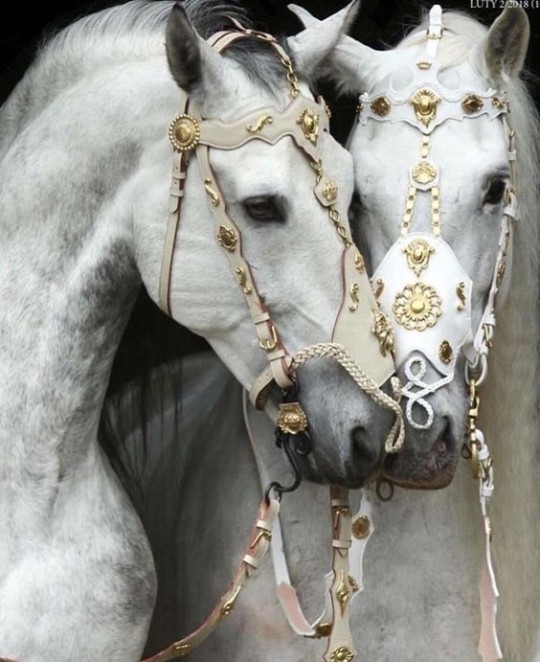
The deities assigned to Ashwini are Ashwini Kumaras_twin horsemen, depicted as young, healthy and handsome men who can heal people.

Like their power, Saule is associated with healing, regeneration and also fertility. She rides in her copper-wheeled carriage with her trusted horses, flying through the sky every day, bringing light and warmth to Earth. In regards to her appearance, she's frequently depicted with long golden hair, as well as being associated with gold and amber in general. She's described as being dressed in golden silk. Being the goddess of health and vitality, she had horses that would never tire nor sweat.
At night Saule would bathe her horses and go to the underworld. She was married to the moon god Menesis. Their first child was Earth, then followed other children: the Stars. It's said that her husband was very carefree, sometimes sneaking out of their castle in his moon carriage, thus leaving the world to darkness. Despite having a husband, ultimately, Saule is a sovereign and independent goddess.
As the setting sun, Saule is known as the falling red apple, a ring or a crown. She's strongly associated with the color red, and also apples and apple trees. Other plants associated with her are daisies, sunflowers, roses and linden.
Saule is honored every year at summer solstice.

I want to talk a little about why I coorelated her to Ashwini but first, I'll talk about the goddess extremely similar to her- Norse goddess Sol/ Sunna. She's also associated with the sun, healing, regeneration and has a chariot pulled by two horses, one of which is called Allsvinn (very fast), the other is called Arvak (early rising). Also, one of her many names literally means "Gold".
I think the association of these goddesses with Ashwini kumaras is clear, but I chose the Baltic goddess saule as to me the Baltic culture is more similar to Ashwini's energies than the Norse (You'll definitely see Norse goddesses in this series tho). Baltic people also have gods which are basically their equivalent of Ashwini Kumaras, twin horsemen gods called Ašvieniai. It's crazy to me that two cultures that you wouldn't think have anything in common basically share a deity.
Other deities that can be associated with Ashwini other than Saule:
Sunna- Norse goddess of the Sun, healing and fertility.
Ašvieniai- Baltic twin horsemen gods who have a gift of healing
Rhiannon- Celtic goddess known as "The Horse Queen", goddess of movement, leadership, the night, the moon and death.
Epona- Celtic goddess most strongly linked to horses (and you can tell by her name)
That's it for Ashwini🤍❤ I love my horse- people😅🤍 I genuinely do, there's no one like you guys, you are very healing and refreshing to be around. Keep going 🐎🐎
Don't forget to comment if u liked this or you can interact in any way .
#ashwini#ashwini nakshatra#baltic mythology#saule#goddess saule#nakshatras#vedic astrology#ashwini kumaras#sun goddess#sun in ashwini#moon in ashwini#ascendant in ashwini#moon in ashwini nakshatra#sun in ashwini nakshatra#ascendant in ashwini nakshatra#ketu in ashwini#ketu in ashwini nakshatra
91 notes
·
View notes